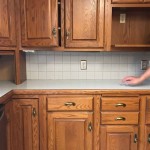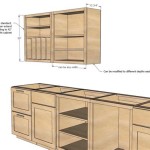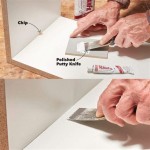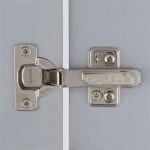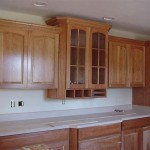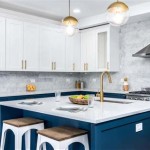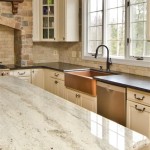Best Way to Clean Painted Kitchen Cupboards
Maintaining the aesthetic appeal of painted kitchen cupboards requires consistent cleaning practices. Grease, grime, and dust accumulate over time, diminishing the vibrancy of the paint and potentially causing irreversible damage if left unaddressed. Implementing a regular cleaning routine and utilizing appropriate cleaning agents are crucial for preserving the longevity and appearance of these essential kitchen components.
The optimal cleaning method depends on various factors, including the type of paint used, the level of soiling, and the age of the finish. Addressing spills and splatters promptly is essential to prevent permanent staining and to minimize the buildup of stubborn residues. Regular gentle cleaning can prevent the need for more aggressive measures later on.
Understanding the Paint Finish
Identifying the type of paint used on the kitchen cupboards is the initial step in selecting the appropriate cleaning method. Common paint types include latex, acrylic, oil-based, and lacquer. Latex and acrylic paints are water-based and generally more sensitive to harsh chemicals and abrasive cleaners. Oil-based paints are more durable and resistant to solvents, but older oil-based paints may yellow over time, and certain cleaning agents can exacerbate this discoloration. Lacquer finishes are often found on high-end cabinetry and require specialized cleaning solutions to avoid damage.
If the paint type is unknown, conducting a test in an inconspicuous area is recommended. Apply a small amount of the chosen cleaning solution to a hidden section of the cupboard, such as the inside of a door or a lower corner. Observe for any adverse reactions, such as discoloration, peeling, or softening of the paint. If no damage occurs, it is likely safe to use the solution on the rest of the cupboards.
Another important consideration is the sheen of the paint. Painted cupboards can have a variety of sheens, including matte, eggshell, satin, semi-gloss, and gloss. Higher-sheen paints are generally more durable and easier to clean, while matte paints are more prone to staining and require gentler cleaning methods. Avoid abrasive cleaners on matte finishes to prevent burnishing, which can create shiny spots and detract from the uniform appearance.
Essential Cleaning Supplies and Tools
Gathering the necessary supplies and tools before beginning the cleaning process streamlines the task and ensures efficient and effective cleaning. The following items are typically required:
- Two clean microfiber cloths: Microfiber cloths are soft, non-abrasive, and highly absorbent, making them ideal for cleaning painted surfaces without scratching.
- Warm water: Warm water is an effective solvent for many common kitchen soils and helps to loosen grease and grime.
- Mild dish soap: Dish soap is a gentle yet effective cleaning agent that can safely remove grease and food stains from painted surfaces. Choose a pH-neutral dish soap to avoid damaging the paint finish.
- Baking soda: Baking soda is a mild abrasive that can be used to remove stubborn stains and scuff marks. It should be used sparingly and with caution to avoid scratching delicate paint finishes.
- White vinegar: White vinegar is a natural disinfectant and degreaser that can be used to remove stubborn grease and odors. Dilute vinegar with water to prevent it from damaging the paint finish.
- Spray bottle (optional): A spray bottle can be used to apply cleaning solutions evenly to the cupboard surfaces.
- Soft-bristled brush (optional): A soft-bristled brush can be used to scrub stubborn stains and grime in hard-to-reach areas.
- Clean, dry towel: A clean, dry towel is used to dry the cupboards after cleaning to prevent water spots and streaks.
Avoid using abrasive sponges, scouring pads, or steel wool, as these can scratch and damage the paint finish. Similarly, avoid using harsh chemicals, such as bleach or ammonia, as these can discolor or strip the paint.
Step-by-Step Cleaning Process
The cleaning process should be approached systematically to ensure thorough and effective results. The following steps outline the recommended procedure for cleaning painted kitchen cupboards:
- Prepare the Cleaning Solution: In a bowl or bucket, mix warm water with a small amount of mild dish soap. The ratio should be approximately one tablespoon of dish soap per gallon of water. Stir the solution gently to avoid creating excessive suds. Alternatively, create a solution of equal parts white vinegar and water for degreasing purposes.
- Dust the Cupboards: Use a clean, dry microfiber cloth to dust the cupboards, removing loose dirt and debris. Start at the top of the cupboards and work your way down. Pay attention to corners, crevices, and other areas where dust tends to accumulate.
- Apply the Cleaning Solution: Dip a clean microfiber cloth into the cleaning solution and wring out the excess moisture. The cloth should be damp, but not dripping wet. Gently wipe down the cupboard surfaces, starting at the top and working your way down. Use a circular motion to loosen grease and grime.
- Address Stubborn Stains: For stubborn stains, create a paste of baking soda and water. Apply the paste to the stain and gently rub it with a soft-bristled brush or a clean microfiber cloth. Rinse the area thoroughly with clean water and dry with a clean, dry towel. Alternatively, use a solution of diluted white vinegar to degrease stubborn areas.
- Rinse the Cupboards: After cleaning, rinse the cupboards with clean water to remove any remaining soap residue. Use a clean, damp microfiber cloth to wipe down the surfaces.
- Dry the Cupboards: Dry the cupboards thoroughly with a clean, dry towel. This will prevent water spots and streaks and help to maintain the shine of the paint finish.
For particularly greasy areas, such as those around the stove or oven, a degreasing solution may be necessary. Commercial degreasers are available, but it is important to choose one that is specifically designed for use on painted surfaces. Always test the degreaser in an inconspicuous area before applying it to the entire cupboard.
Preventative Measures and Maintenance
Preventative measures and regular maintenance can significantly reduce the need for intensive cleaning and prolong the life of painted kitchen cupboards. Implementing the following practices can help to keep the cupboards clean and in good condition:
- Wipe up spills and splatters immediately: Promptly addressing spills and splatters prevents them from drying and becoming difficult to remove.
- Ventilate the kitchen: Adequate ventilation helps to reduce the buildup of grease and grime on the cupboards. Use the range hood when cooking and open windows to improve airflow.
- Regularly dust the cupboards: Dusting the cupboards on a regular basis prevents the accumulation of dust and debris, which can make them look dull and dirty.
- Avoid placing hot items directly on the cupboards: Heat can damage the paint finish and cause it to peel or blister. Use trivets or heat-resistant pads to protect the cupboards from heat damage.
- Consider using shelf liners: Shelf liners can protect the inside of the cupboards from spills and stains.
- Periodically inspect the cupboards for damage: Regularly inspect the cupboards for signs of damage, such as scratches, chips, or peeling paint. Repair any damage promptly to prevent it from worsening.
Establishing a consistent cleaning routine is essential for maintaining the appearance and longevity of painted kitchen cupboards. Incorporating weekly dusting and spot cleaning, along with a more thorough monthly cleaning, will help to prevent the buildup of grease, grime, and stains. By following these guidelines and using appropriate cleaning agents, painted kitchen cupboards can remain clean, vibrant, and aesthetically pleasing for years to come.
The frequency of cleaning depends on the usage of the kitchen and the lifestyle of the occupants. Homes with frequent cooking or young children may require more frequent cleaning than homes with less cooking or without children. Visually inspecting the cupboards regularly will help determine the appropriate cleaning schedule.
When cleaning around hardware, such as knobs and pulls, take extra care to avoid damaging the finish. Use a soft cloth or brush to clean around the hardware and avoid using abrasive cleaners that could scratch or corrode the metal. Consider removing the hardware periodically to clean underneath and around it thoroughly.
For older painted cupboards, the paint finish may be more fragile and prone to damage. Use extra caution when cleaning older cupboards and avoid using harsh chemicals or abrasive cleaners. Gentle cleaning methods and mild cleaning solutions are recommended for older painted surfaces.
By adhering to these best practices, homeowners can effectively clean and maintain their painted kitchen cupboards, preserving their beauty and functionality for an extended period. Consistent attention and appropriate cleaning techniques are paramount to ensuring the longevity and aesthetic appeal of this vital kitchen feature.

How To Clean Painted Kitchen Cabinets By Kayla Payne

How To Clean Painted Wood Kitchen Cabinets 518 Painters

How To Clean Your Painted Kitchen Cabinets

The Best Ways To Clean Your Painted Kitchen Cabinets

3 Super Easy Ways To Clean White Kitchen Cabinets And Avoid

How To Clean Prep Wood Kitchen Cabinets Before Painting Do Dodson Designs

Best Ways To Clean Your Painted Kitchen Cabinets

Painted Cabinet Cleaning Smart Tips To Wash Stained Cabinets

How To Clean Cabinets Before Painting Ultimate Guide With Pro Tips Grace In My Space

How To Clean Painted Cabinets New Life Painting
Related Posts

